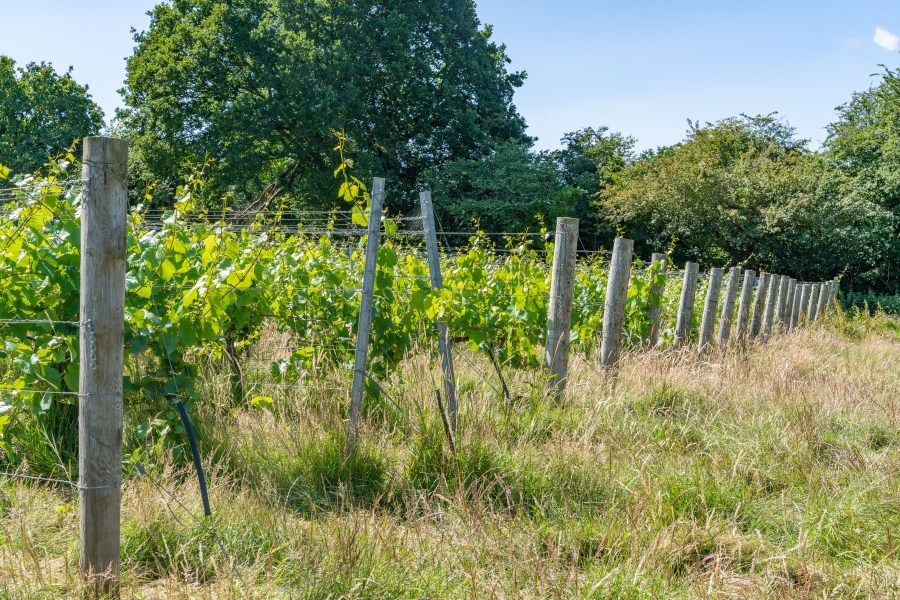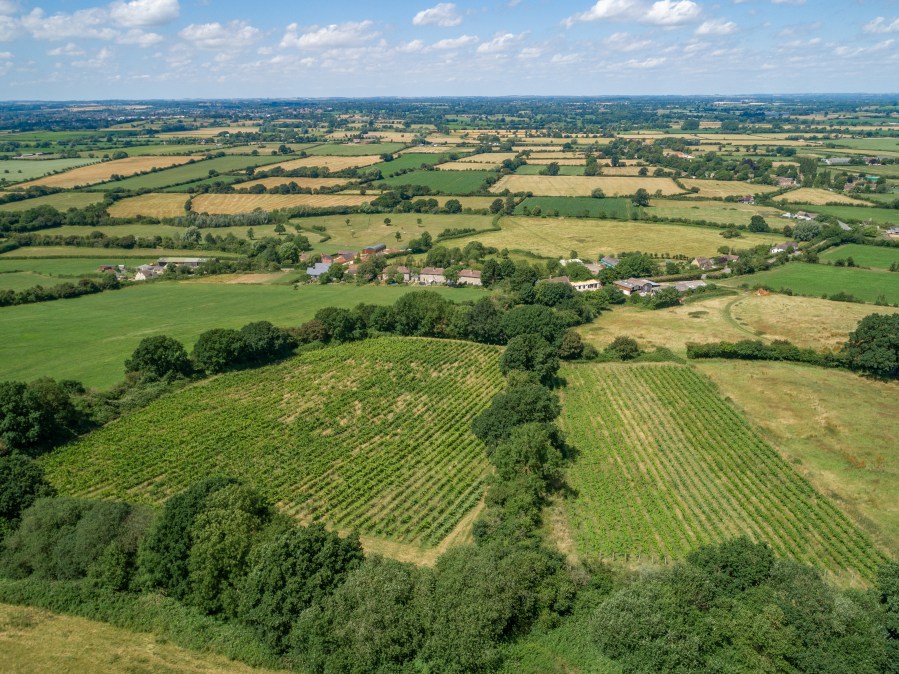Maud Heath Vineyard in Wiltshire is an outlier in a sector mainly populated by vineyards in the south east. Their Tytherton Red, made from 60% Pinot Noir and 40% Rondo, was described by Matthew Jukes in Vineyard magazine (September 2018), as “without doubt the most successful red blend I have ever tasted from within our shores”.
It is perhaps then not surprising that Maud Heath have a strong regional following or that their wine sells through 23 branches of Waitrose. They also supply many independents including Allington Farm Shop and Hawkins Brothers.
Maud Heath Vineyard was planted at Wick Bridge Farm, Calne, Wiltshire in 2006 by the Bateman family. Extending to 34 acres Wick Bridge Farm comprises a Grade II listed Cotswold Stone five bed farmhouse, a range of agricultural buildings, six acre vineyard,
16 acres of pasture and eight acres of arable land.
The vineyard has 9,000 vines which produce award-winning wine. Most recent and notable awards include the Chardonnay 2018 (Silver, 90 points), Tytherton Red 2018 (Bronze, 89 points), Bacchus 2018 (Bronze, 88 points) at Decanter 2020 and Tytherton Red 2018 (Bronze, 89 points), Chardonnay 2018 (Bronze 89 points), Pinot Noir Sparkling Rose 2015 (Bronze, 88 points) at the International Wine Challenge 2020. There are a total of 7,550 bottles of wine in store.
|
Table 1: Vines and Planting |
||
|
Grape |
No of vines |
Planting years |
|
Bacchus |
2,350 |
2006, 2008, 2014 |
|
Early Pinot Noir |
2,000 |
2006, 2008 |
|
Pinot Noir |
1,500 |
2011 |
|
Pinot Meunier |
550 |
2014 |
|
Chardonnay |
1,550 |
2006, 2008, 2014 |
|
Rondo |
1,050 |
2006, 2008, 2014 |
Maud Heath Vineyard’s average production between 2017 – 2022 is 2.74 tonnes per acre. Compared to benchmark yields, the yields outperform the south west average across all years except 2017 when only 65% of the vineyard was mature (Table 2).
|
Table 2: Yields (t/ac) at Maud Heath and in South West |
||||||
|
Yield (t / ac) |
||||||
|
Years |
2017 |
2018 |
2019 |
2020 |
2021 |
2022 |
|
Maud Heath |
2.11 |
2.96 |
3.38 |
3.11 |
2.55 |
2.33 |
|
South West |
2.36 |
2.23 |
2.17 |
1.43 |
2.33 |
2.16 |
The largest variable in production cost per tonne is the scale of the yield. From an investor’s perspective, the yields are encouraging, as it will increase the contribution margin per bottle.
The must analysis in Table 3 shows a vineyard producing grapes with similar ripeness levels to many leading vineyards in the south east.
Maud Heath is that rare thing that we Brits love; an underdog punching above its weight. During this period of rising demand for still wine, it would make an exciting prospect for a family that want to build on the good work that the Batemans have started.
|
Table 3 – Average Must Analysis in Maud Heath |
||
|
Varieties |
Maud Heath Avg Must 2018 – 2020 |
National Avg |
|
PN Precoce |
||
|
Oe |
64.00 |
77.41 |
|
TA |
9.00 |
8.33 |
|
Rondo |
||
|
Oe |
84.00 |
72.20 |
|
TA |
10.50 |
9.92 |
|
Bacchus |
||
|
Oe |
69.50 |
73.26 |
|
TA |
8.50 |
9.04 |
|
Chardonnay |
||
|
Oe |
81.50 |
72.98 |
|
TA |
9.70 |
12.21 |
|
Pinot Noir |
||
|
Oe |
72.50 |
74.26 |
|
TA |
8.40 |
11.67 |
|
Pinot Meunier |
||
|
Oe |
70.50 |
71.78 |
|
TA |
8.70 |
11.78 |





